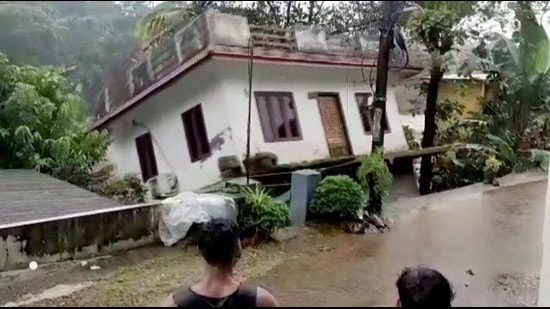Climate crisis: Why India must focus on adaptation
Several State-run social sector programmes need reimagining. Shouldn’t the Pradhan Mantri Awas Yojana enable the construction of climate and disaster resilient housing? Shouldn’t the Har Ghar Jal Yojana aim to harness sustainable water sources? The local development plans at the block and panchayat levels need to focus on developing climate-resilient systems, livelihoods, and assets, both public and private.
Two recent publications point out pathways for India to meet the challenges posed by the climate crisis.

The Intergovernmental Panel on Climate Change (IPCC)’s Sixth Assessment Report, released in August, acknowledged India’s efforts towards pledges on emission, but advocated a net-zero deadline. Then, an article by Indian and American scientists (published in Nature) highlighted the socio-economic impact of even small changes in rainfall patterns. Using records spanning over 200 years, the study concluded that even rainfall variation of 14% or more due to the climate crisis can lead to large-scale disruptions such as famine, starvation, riots, and epidemics.
The message for India, therefore, is not so much mitigation, but to go for a quicker, broader, and deeper climate crisis adaptation plan. There are two fundamental approaches that India can adopt to meet this goal.
One, integrate climate adaptation, disaster risk resilience and Sustainable Development Goals (SDGs) in development policies, including public and private expenditure. A good start has been made by combining these elements in the National Disaster Management Plan 2019, but these aspects need to become the basis of all development plans and activities.
Second, reorient mitigation as a subset of both adaptation and the country’s socio-economic aspirations. India needs to strengthen its SDG strategy. No resilience strategy is better than a combination of economic prosperity, inclusive and sustainable public services, and an adequate social safety net. Further, as the Covid-19 pandemic showed, scientific prowess and strong institutions are also necessary. Not only are SDGs more relevant, especially for the poor and vulnerable citizens, but they have to be achieved by 2030. In the long-run, this will help India become a net-zero carbon economy without communities and individuals falling through the cracks.
Several State-run social sector programmes need reimagining. Shouldn’t the Pradhan Mantri Awas Yojana enable the construction of climate and disaster resilient housing? Shouldn’t the Har Ghar Jal Yojana aim to harness sustainable water sources? The local development plans at the block and panchayat levels need to focus on developing climate-resilient systems, livelihoods, and assets, both public and private.
Shouldn’t the Mahatma Gandhi National Rural Employment Guarantee Scheme-funded projects combine climate resilience and attainment of SDGs, along with livelihood support? Shouldn’t India shift towards outcome-based public budgets, measuring resilience as a key indicator? Are the skill development programmes factoring in future jobs arising from climate actions by the private sector? What role should research organisations play in furthering climate action knowledge, and how will this be translated into policies and programmes in the public and private sectors?
The answers to these critical questions can help form a coherent, people-driven, and collaborative adaptation strategy at the national, state, and local levels.
Under this government, India has taken the lead in climate action by spearheading initiatives such as the Coalition for Disaster Resilient Infrastructure, International Solar Alliance, and the Global Cooling Prize. But the integration of such initiatives in every sector of the economy and each village, town, and city will not be an easy task.
Infrastructure must be redesigned to meet resilience standards. Investments in early warning systems and climate and disaster resilient infrastructure will minimise the loss of lives, livelihoods, and assets in the event of a disaster. Fortunately, the majority of such infrastructure in India is yet to be built. The increasing use of solar power has to accompany the retiring of coal-fired power plants. It is not just air conditioning and refrigeration that needs reimagining; sectors such as construction, local transport, food processing, farming, and water resources management must be rehauled.
The country also needs to invest in improved climate data collection, management, and analyses. In addition, downscaled modelling, which examines relatively small areas in detail, will be necessary to predict and manage short- to long-term impacts. Given India’s federal structure and diverse geography, the state and local authorities will need to take the lead on such measures with strong support from the Centre.
The current state action plans on climate change must be revised and upgraded to evidence-based and outcome-orientated strategies; these must be flexible, inclusive, and developed using a bottom-up approach.
While the climate crisis is often perceived as an environmental issue, it is more of a social development and economic growth concern for India. Therefore, every household, community, and business must be well prepared to meet the emerging challenges.
Sanjay Gupta is an independent international analyst on development issues, and Uttam Kumar Sinha works at the Manohar Parrikar Institute for Defence Studies and Analyses, New Delhi
The views expressed are personal
Continue reading with HT Premium Subscription




